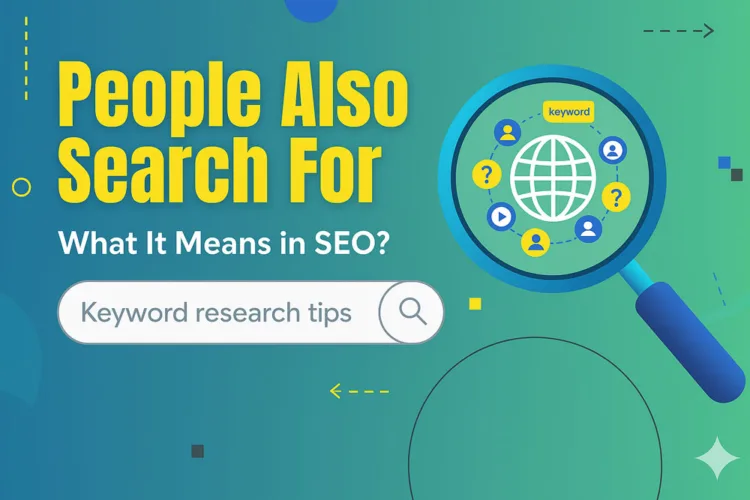
Witnessing a sudden slip in your website traffic can be hurting. Maintaining a stable visitor flow to your site is a must to win at any online business. However, fluctuations in traffic are expected, and understanding the causes behind the drop is key to handling the issue effectively. Now, let’s explore 12 crucial reasons that could be behind a sudden website traffic drop.
Common Causes of a Sudden Website Traffic Drop
1. Algorithm Updates
Google’s algorithm updates are designed to improve search results and provide users with prominently useful and high-quality content. However, these updates can significantly impact website traffic, particularly if your website fails to cope with the latest guidelines.
The recent June 2024 Spam update and major algorithm updates, like the Panda, Penguin, and Hummingbird updates, have been known to penalize websites with thin or duplicate content, faked link profiles, and poor user experience. If your website traffic dropped shortly after a Google algorithm update, your site was likely affected by the changes.
To mitigate the impact, you should thoroughly analyze your website’s content, backlink profile, and technical aspects to identify areas that need improvement. Implementing best practices for on-page optimization, content quality, and link-building strategies can help you recover from algorithm-related traffic drops.
2. SEO Mistakes
Minor SEO mistakes can have a significant impact on your website’s quick drop.
Common SEO mistakes that can lead to a sudden website traffic drop include:
- Keyword stuffing or overoptimization
- Broken or outdated links
- Duplicate or thin content
- Lack of proper meta tags and descriptions
- Poor site structure and navigation
- Slow loading times
If you’ve recently made changes to your website’s content, structure, or optimization strategies, just review them for potential SEO mistakes. Conducting a thorough SEO audit can help you.
3. Slow Loading Speed
Snail-like loading sites not only frustrate visitors but also negatively impact search engine rankings, bringing a rapid drop in traffic.
Factors causing slow loading speeds
- Unoptimized images and media files
- Excessive use of plugins or scripts
- Poorly optimized code
- Insufficient server resources
- Inefficient caching mechanisms
If your website’s loading speed has decreased, visitors are more likely to abandon the site, leading to a higher bounce rate and lower engagement metrics. This, in turn, can point towards search engines that your website provides a poor user experience, resulting in a drop in rankings and traffic.
To address this issue, you should regularly monitor your website’s loading speed using tools. Implement SEOing techniques such as image compression, minification of code, and leveraging browser caching to improve loading times and enhance the overall user experience.
4. Link-Based Penalty
Search engines heavily rely on backlinks as a ranking factor. However, if your website has acquired low-quality or spammy backlinks, it can trigger a link-based penalty, leading to a significant slip in traffic.
Link-based penalties can occur due to various reasons, including:
- Participating in link schemes or link buying
- Excessive reciprocal linking
- Links from low-quality or irrelevant websites
- Links with over-optimized anchor text
If your website got hit by a link-based penalty, it’s crucial to take immediate action. Start by conducting a comprehensive backlink audit to identify and prohibit any lower-quality or spammy links pointing to your site. Additionally, go ahead with building high-quality, relevant backlinks through content marketing, guest blogging, and other white-hat link-building strategies.
Recovering from a link-based penalty can be a time-consuming process, but it’s essential to regain search engines’ trust and restore your website’s visibility in the SERPs.
5. Mobile-Friendliness
Google has been majorly preferring mobile-friendly websites in its search results, and failure to comply with mobile-friendliness standards can lead to significant website traffic drop.
A mobile-friendly website needs:
- Responsive to all screens
- Easy navigation and touch-friendly elements
- Optimized content and media for smaller screens
- Fast loading times on mobile devices
If your website traffic has dropped, especially from mobile devices, it’s crucial to assess your site’s mobile-friendliness. You can use the Mobile-Friendly Test tool of Google to place any issues.
Implementing a responsive design, optimizing content and media for mobile devices, and ensuring speedy loading times can greatly improve the mobile user experience and help you regain lost traffic from mobile users.
6. Changing Trends
If your website fails to keep up with changing trends and user preferences, it can lead to a decline in website traffic.
Some examples of changing trends that can impact website traffic drop include:
- Shifts in user behavior and preferences
- Emergence of new technologies or platforms
- Changes in content consumption patterns
- Evolving search trends and queries
To stay ahead of the trend, it’s essential to monitor industry trends, analyze user behaviour data, and adapt your content and marketing strategies accordingly. Conduct regular keyword research to identify new search trends.
Additionally, stay informed about emerging technologies and platforms that could potentially impact your target audience’s online behaviour. Embracing these changes and adapting your website to cater to evolving trends can help you maintain a steady flow of website traffic.
7. Strong Competitors in Traffic Fluctuations
The rise of a strong competitor can lead to fluctuations in your website traffic. If a competing website starts offering superior content, better user experience, or more effective marketing strategies, it can attract a portion of your audience, resulting in a drop in your website traffic.
To mitigate the impact of strong competitors, it’s crucial to:
- Conduct Competitor Analysis: Regularly analyze your competitors’ strategies, content, and marketing efforts to identify areas where they may be outperforming you.
- Differentiate Your Offering: Highlight the unique value propositions and strengths of your website to distinguish yourself from competitors and attract your target audience.
- Focus on User Experience: Prioritize creating an exceptional user experience by optimizing site navigation, improving loading speeds, and providing high-quality, engaging content.
8. Social Media Influence
Social media platforms have become powerful drivers of website traffic. If your social media presence and engagement levels decline, it can directly impact the amount of traffic your website receives from these channels.
Several factors can contribute to a drop in social media influence, including:
- Inconsistent or infrequent posting
- Lack of engaging or shareable content
- Declining follower count or engagement levels
- Changes in social media algorithms or policies
To maintain a strong social media presence and drive consistent traffic to your website, it’s essential to:
- Develop a Social Media Strategy: Establish a clear plan for content creation, posting schedules, and audience engagement across relevant platforms.
- Create Compelling Content: Produce high-quality, visually appealing, and shareable content.
- Leverage Influencer Partnerships: Collaborate with influencers or industry leaders to grab their current audience and expand your reach.
- Analyze and Adapt: Regularly monitor your social media metrics, track trends, and adjust your strategies accordingly to maintain relevance and engagement.
9. Seasonal Trends
Certain industries or businesses may experience seasonal fluctuations in website traffic due to changing consumer behaviour and demand patterns. For example, an e-commerce website selling holiday decorations may see a spike in traffic during the holiday season but a significant drop after the festivities are over.
To manage seasonal trends and traffic impact:
- Analyze Historical Data: Study your website’s traffic patterns over previous years, understand the clear seasonal trends and plan accordingly.
- Diversify Your Offerings: Consider introducing products or services that cater to different seasons or have year-round demand to maintain a steady flow of traffic.
- Implement Seasonal Marketing Campaigns: Develop targeted marketing campaigns and promotions aligned with seasonal trends to attract and engage your audience during peak periods.
- Optimize for Off-Season Periods: Focus on improving your website’s visibility and rankings during off-season periods by investing in content creation, link-building, and other SEO strategies.
10. Information Architecture
A well-structured and perfectly organized website is essential for providing a seamless user experience and ensuring optimal search engine visibility. However, if your website’s information architecture is poorly designed or outdated, it can lead to a drop in website traffic.
Information architecture encompasses various aspects, including:
- Site structure and navigation
- Content organization and labelling
- Internal linking and cross-linking
- URL structure and hierarchy
If visitors struggle to find the information they’re looking for or encounter broken links or confusing navigation, they are more likely to dump your website.
To address information architecture issues, conduct a thorough website audit to identify areas that need improvement. Streamline your site’s navigation, optimize content organization, and implement a logical URL structure. Additionally, ensure that internal links are functioning correctly and provide clear pathways for users and search engines to navigate your website effectively.
11. Server Overload
If your website is experiencing a sudden influx of traffic that exceeds the server’s capacity, it can lead to slow loading times, downtime, or even crashes. This then results in a drop in website traffic as visitors become frustrated and leave the site.
Server overload reasons include:
- Insufficient server resources (CPU, RAM, bandwidth)
- Inefficient website or application code
- Distributed Denial of Service (DDoS) attacks
- Unexpected traffic spikes (e.g., viral content or marketing campaigns)
To prevent server overload and ensure a smooth user experience, it’s crucial to:
- Monitor Server Performance: Regularly monitor server metrics, to pinpoint potential bottlenecks or overload situations.
- Optimize Website Performance: Implement caching mechanisms, minify code, and optimize images and other media files to reduce server load.
- Scale Server Resources: Consider upgrading your server resources or implementing load-balancing techniques to distribute traffic across multiple servers if necessary.
- Implement Security Measures: Deploy security measures, such as firewalls and DDoS protection, to mitigate the risk of malicious attacks that could overload your server.
12. Duplicate content
Duplicate content can bring down your website quickly. Search engines give importance to unique, high-quality content and may penalize websites with excessive duplication.
Duplicate content sources include:
- Republishing the same content across multiple pages or domains
- Scraped or plagiarized content from other websites
- Printer-friendly or mobile versions of the same content
- Session IDs or URL parameters creating duplicate URLs
To address duplicate content issues and prevent a negative impact on your website traffic, it’s essential to:
- Conduct a Content Audit: Identify any instances of duplicate content across your website and take appropriate action, such as consolidating or removing the duplicates.
- Use canonical URLs to specify the preferred version of a page for search engines, preventing them from indexing duplicate versions.
- Utilize Robots.txt and Meta Robots Tags
- Regularly monitor for instances of your content being copied or scraped by other websites.
Conclusion
Experiencing a sudden website traffic drop can be concerning. By addressing the issues noted down in this guide, you can take proactive measures to restore your website’s visibility, improve user experience, and maintain a steady flow of traffic.
Remember, website traffic fluctuations are expected, and adapting to changing trends, optimizing your SEO strategies, and providing high-quality content are essential for long-term success. Regularly monitor your website’s performance, analyze user behaviour data, and stay informed about industry developments. By staying vigilant, proactive, and adaptable, you can overcome the challenges of website traffic drop and ensure the long-term success of your online presence.



